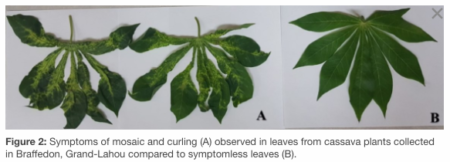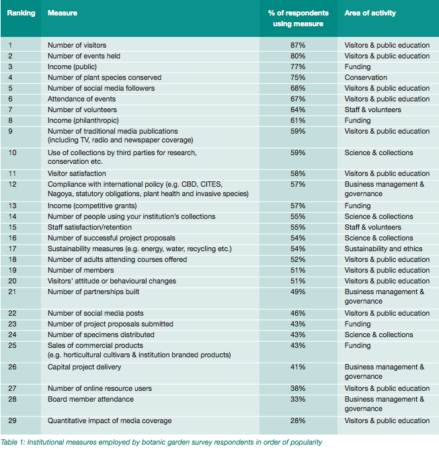- An ethnographic exploration of perceptions of changes in dietary variety in the Kolli Hills, India. Cassava cash cropping has had unforeseen effects on dietary diversity.
- Mapping and assessing crop diversity in the irrigated Fergana Valley, Uzbekistan. More crops on the edges.
- An Analysis on Crops Choice and Its Driving Factors in Agricultural Heritage Systems—A Case of Honghe Hani Rice Terraces System. Established for “red rice”, but that’s not enough.
- Prebreeding Using Wild Species for Genetic Enhancement of Grain Legumes at ICRISAT. It’s not easy, but it’s been worth it.
- A Multispecies Collecting Strategy for Crop Wild Relatives Based on Complementary Areas with a High Density of Ecogeographical Gaps. Collecting in Spain in “…top 10 selected complementary areas would allow the capture of 59 of the 88 targeted taxa and 31% of the 683 different taxa-ELC category combinations identified in the ecogeographical gaps.”
- Antioxidant power, anthocyanin content and organoleptic performance of edible flowers. Tycoon Blue will be quite the marketing challenge.
- Diversifying Food Systems in the Pursuit of Sustainable Food Production and Healthy Diets. And nary an edible flower mentioned.
- Cereal price shocks and volatility in sub-Saharan Africa: what really matters for farmers’ welfare? Prices.
Measuring the success of botanical gardens
Good to see Botanic Gardens Conservation International first technical review online, entitled Defining the botanic garden, and how to measure performance and success.
The definition part turns out to be a compendium of “criteria useful in defining a botanic garden.” The performance measures are rather long lists of indicators in the following areas, ranked by the percentage of correspondents who agreed with each measure:
- Plant conservation
- Scientific research
- Collections
- Horticulture
- Public engagement and education
- Sustainability and ethics
- Business management and governance
Here’s the overall list:
Is there anything genebanks could learn from these?
CILY in cassava: not so fast
So it turns out the article the previous post on the possibility of Côte d’Ivoire lethal yellowing phytoplasma (CILY) attacking cassava in that country may have been a bit premature. Dr Lava Kumar, virologist and Head of Germplasm Health Unit at IITA, left the following comment on my Facebook page:
Misleading! The symptoms on these leaves are typical cassava mosaic. Authors of this study happened to detect CILY in CMD infected plants and left it loose for interpretation. Reports of this kind can create needless phytosanitary bottlenecks. Wish NDR editorial review was better.
Time to wheel on Koch’s Postulates?
CILY jumps to cassava?
You know that disease that we said about a year ago was threatening coconut plantations (and, incidentally, a coconut genebank) in Côte d’Ivoire? Yeah, Côte d’Ivoire lethal yellowing phytoplasma (CILY) that’s the one, well remembered.
Well, it looks like it may be affecting cassava as well.

That’s not good. Not good at all.
To our knowledge this is the first report of a phytoplasma affecting cassava in Côte d’Ivoire. The findings suggest that cassava may be a potential alternative host for the CILY phytoplasma, which poses a serious threat for the food security of the smallholder coconut and cassava farmers, especially women in Grand-Lahou, Côte d’Ivoire.
Brainfood: Wild foods, Maize in Guatemala, Wild lentils, Sorghum gaps, Ethiopian erosion, Chikanda barcoding, Brazil nut systems, Wild carrots, Ancient wild potato use, Wild wheat grains
- The role of wild fruits and vegetables in delivering a balanced and healthy diet. Not great, until they’re domesticated.
- Maize Diversity, Market Access, and Poverty Reduction in the Western Highlands of Guatemala. Forget maize.
- Evaluation of Wild Lentil Species as Genetic Resources to Improve Drought Tolerance in Cultivated Lentil. Environment explained drought response in wild lentils better than molecular classification.
- Geographical distribution, diversity and gap analysis of East African sorghum collection conserved at the ICRISAT genebank. Both Sudans.
- Explaining the Ethiopian farmers’ perceptions on potential loss of traditional crop varieties: A principal components regression analysis. Poor farmers know more, and care more, about loss of traditional landraces.
- High-throughput sequencing of African chikanda cake highlights conservation challenges in orchids. Those are very biodiverse cakes, but not in a good way.
- Revisiting the ‘cornerstone of Amazonian conservation’: a socioecological assessment of Brazil nut exploitation. It’s actually in pretty good shape, but that doesn’t mean it can’t be improved.
- Phylogenetic Prediction of Alternaria Leaf Blight Resistance in Wild and Cultivated Species of Carrots. Look for taller material in clade A.
- Starch granule evidence for the earliest potato use in North America. S. jamesii may have been used for 10,000 years in Utah.
- Genome-Wide Association Study of Grain Architecture in Wild Wheat Aegilops tauschii. Two genetic lineages, with big differences in grain width and weight.
